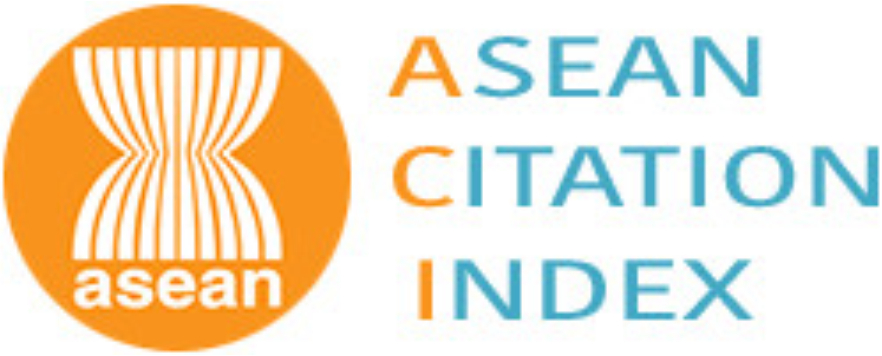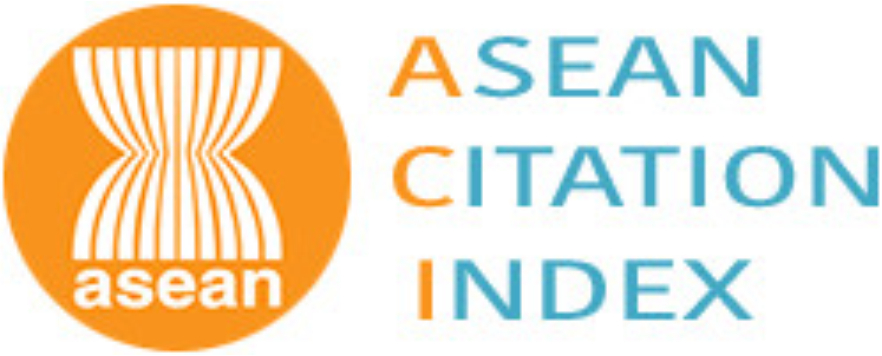Nghiên cứu thực nghiệm cường độ chịu nén và sự co ngót của bê tông đất
Email:
chinhnd@utc.edu.vn
Từ khóa:
Bê tông sinh thái, bê tông đất, sợi gai dầu, đất sét, co ngót, cường độ nén.
Tóm tắt
Bê tông đất trong nghiên cứu này có thành phần chính là đất tự nhiên (đất sét và đất cát), một lượng nhỏ vôi, xi măng và sợi gai dầu. Mười hai hỗn hợp bê tông đất đã được chế tạo để thử nghiệm với sự thay đổi hàm lượng đất sét từ 0 đến 40% và sợi gai dầu từ 0 đến 1.2% về khối lượng. Nghiên cứu này nhằm mục tiêu tối ưu hoá thành phần của bê tông đất. Thí nghiệm nén dọc trục và co ngót của bê tông được thực hiện tại các thời điểm và trong các điều kiện bảo dưỡng khác nhau (trong thùng bảo dưỡng và trong điều kiện thường). Kết quả cho thấy, cường độ nén của bê tông khá tốt (trên 1MPa) tại thời điểm 28 ngày và không ngừng tăng lên (» 2,5MPa ở 180 ngày). Chỉ cần rung chấn nhỏ khi thi công, bê tông đất có khả năng tự lấp đầy vào ván khuôn tốt, và do đó đủ điều kiện áp dụng làm tường cho kết cấu khung. Kết quả cũng chỉ ra rằng, độ co ngót của bê tông đất phụ thuộc rất lớn vào tỉ lệ đất sét và cốt sợi. Độ co ngót của bê tông đất cao hơn hẳn so với bê tông thường do không có cốt liệu lớn làm hạn chế sự co ngót tổng thể và độ rỗng của nó cũng cao hơn bê tông thường do chứa hàm lượng lớn đất sét và đất sét là loại vật liệu háo nước.Tài liệu tham khảo
[1] H. Van Damme, H. Houben, Earth concrete. Stabilization revisited, Cement and Concrete Research, 114 (2018) 90-102. https://doi.org/10.1016/j.cemconres.2017.02.035
[2] S.M. Rao, P. Shivananda, Compressibility behavior of lime-stabilized clay, Geotechnical and Geological Engineering, 23 (2005) 309-319. https://doi.org/10.1007/s10706-004-1608-2
[3] F. Sariosseiri, B. Muhunthan, Effect of cement treatment on geotechnical properties of some Washington State soils, Engineering Geology, 104 (2009) 119-125. https://doi.org/10.1016/j.enggeo.2008.09.003
[4] P. Lura, O.M. Jensen, J. Weiss, Cracking in cement paste induced by autogenous shrinkage, Mater Struct, 42 (2009) 1089-1099. https://doi.org/10.1617/s11527-008-9445-z
[5] P. Zak et al., The influence of natural reinforcement fibers, gypsum and cement on compressive strength of earth bricks materials, Construction and Building Materials, 106 (2016) 179-188. https://doi.org/10.1016/j.conbuildmat.2015.12.031
[6] N. Mostefai et al., Microstructure and mechanical performance of modified hemp fibre and shiv mortars: Discovering the optimal formulation, Materials and design, 84 (2015) 359-371. https://doi.org/10.1016/j.matdes.2015.06.102
[7] M. Degrave-Lemeurs, P. Glé, A. Hellouin de Menibus, Acoustical properties of hemp concretes for buildings thermal insulation: Application to clay and lime binders, Construction and Building Materials, 160 (2018) 462-474. https://doi.org/10.1016/j.conbuildmat.2017.11.064
[8] J.M. Kanema, J. Eid, S. Taibi, Shrinkage of earth concrete amended with recycled aggregates and superplasticizer: impact on mechanical properties and cracks, Materials and Design, 109 (2016) 378-389. https://doi.org/10.1016/j.matdes.2016.07.025
[9] G.H. Omidi, J. C. Thomas, K.W. Brown, Effect of drying cracking on the hydraulic conductivity of a compacted clay liner, Water, Air and Soil Pollution, 89 (1996) 91-103. https://doi.org/10.1007/BF00300424
[10] K.C. Hover, Evaporation of water from concrete surface, ACI Mater J, 103 (2006) 384-389.
[11] T.T. Nguyen, Contribution à l’étude de la formulation et du procédé de fabrication d'éléments de construction en béton de chanvre, Université de Bretagne Sud (2010).
[12] S.A. Khattab, M. Al-Mukhtar, J.M. Fleureau, Long–term characteristics of a lime treated plastic soil, Journal of Materials in Civil Engineering, 19 (2007) 358-366. https://doi.org/10.1061/(ASCE)0899-1561(2007)19:4(358)
[13] L. Makki-Szymkiewicz et al., Evolution of the properties of lime-treated silty soil in a small experimental embankment, Engineering Geology, 191 (2015) 8-22. https://doi.org/10.1016/j.enggeo.2015.03.008
[14] F. Collet, M. Bart, L. Serres, J. Miriel, Porous structure and water vapor sorption of hemp-based materials, Construction and Building Materials, 22 (2008) 1271-1280. https://doi.org/10.1016/j.conbuildmat.2007.01.018
[15] K. Hannawi et al., Effect of different types of fibers on the microstructure and the mechanical behavior of ultra-high performance fiber-reinforced concretes, Composites Part B: Engineering, 86 (2016) 214-220. https://doi.org/10.1016/j.compositesb.2015.09.059
[16] L.S. Ho et al., Strength development of cement-treated soils: effect of water content, carbonation and pozzolanic reaction under drying curing condition, Construction and Building Materials, 134 (2017) 703-712. https://doi.org/10.1016/j.conbuildmat.2016.12.065
[2] S.M. Rao, P. Shivananda, Compressibility behavior of lime-stabilized clay, Geotechnical and Geological Engineering, 23 (2005) 309-319. https://doi.org/10.1007/s10706-004-1608-2
[3] F. Sariosseiri, B. Muhunthan, Effect of cement treatment on geotechnical properties of some Washington State soils, Engineering Geology, 104 (2009) 119-125. https://doi.org/10.1016/j.enggeo.2008.09.003
[4] P. Lura, O.M. Jensen, J. Weiss, Cracking in cement paste induced by autogenous shrinkage, Mater Struct, 42 (2009) 1089-1099. https://doi.org/10.1617/s11527-008-9445-z
[5] P. Zak et al., The influence of natural reinforcement fibers, gypsum and cement on compressive strength of earth bricks materials, Construction and Building Materials, 106 (2016) 179-188. https://doi.org/10.1016/j.conbuildmat.2015.12.031
[6] N. Mostefai et al., Microstructure and mechanical performance of modified hemp fibre and shiv mortars: Discovering the optimal formulation, Materials and design, 84 (2015) 359-371. https://doi.org/10.1016/j.matdes.2015.06.102
[7] M. Degrave-Lemeurs, P. Glé, A. Hellouin de Menibus, Acoustical properties of hemp concretes for buildings thermal insulation: Application to clay and lime binders, Construction and Building Materials, 160 (2018) 462-474. https://doi.org/10.1016/j.conbuildmat.2017.11.064
[8] J.M. Kanema, J. Eid, S. Taibi, Shrinkage of earth concrete amended with recycled aggregates and superplasticizer: impact on mechanical properties and cracks, Materials and Design, 109 (2016) 378-389. https://doi.org/10.1016/j.matdes.2016.07.025
[9] G.H. Omidi, J. C. Thomas, K.W. Brown, Effect of drying cracking on the hydraulic conductivity of a compacted clay liner, Water, Air and Soil Pollution, 89 (1996) 91-103. https://doi.org/10.1007/BF00300424
[10] K.C. Hover, Evaporation of water from concrete surface, ACI Mater J, 103 (2006) 384-389.
[11] T.T. Nguyen, Contribution à l’étude de la formulation et du procédé de fabrication d'éléments de construction en béton de chanvre, Université de Bretagne Sud (2010).
[12] S.A. Khattab, M. Al-Mukhtar, J.M. Fleureau, Long–term characteristics of a lime treated plastic soil, Journal of Materials in Civil Engineering, 19 (2007) 358-366. https://doi.org/10.1061/(ASCE)0899-1561(2007)19:4(358)
[13] L. Makki-Szymkiewicz et al., Evolution of the properties of lime-treated silty soil in a small experimental embankment, Engineering Geology, 191 (2015) 8-22. https://doi.org/10.1016/j.enggeo.2015.03.008
[14] F. Collet, M. Bart, L. Serres, J. Miriel, Porous structure and water vapor sorption of hemp-based materials, Construction and Building Materials, 22 (2008) 1271-1280. https://doi.org/10.1016/j.conbuildmat.2007.01.018
[15] K. Hannawi et al., Effect of different types of fibers on the microstructure and the mechanical behavior of ultra-high performance fiber-reinforced concretes, Composites Part B: Engineering, 86 (2016) 214-220. https://doi.org/10.1016/j.compositesb.2015.09.059
[16] L.S. Ho et al., Strength development of cement-treated soils: effect of water content, carbonation and pozzolanic reaction under drying curing condition, Construction and Building Materials, 134 (2017) 703-712. https://doi.org/10.1016/j.conbuildmat.2016.12.065
Tải xuống
Chưa có dữ liệu thống kê

Nhận bài
13/09/2020
Nhận bài sửa
21/10/2020
Chấp nhận đăng
22/10/2020
Xuất bản
28/10/2020
Chuyên mục
Công trình khoa học
Kiểu trích dẫn
Ngô Đức, C. (1603818000). Nghiên cứu thực nghiệm cường độ chịu nén và sự co ngót của bê tông đất. Tạp Chí Khoa Học Giao Thông Vận Tải, 71(8), 924-934. https://doi.org/10.47869/tcsj.71.8.4
Số lần xem tóm tắt
242
Số lần xem bài báo
290









